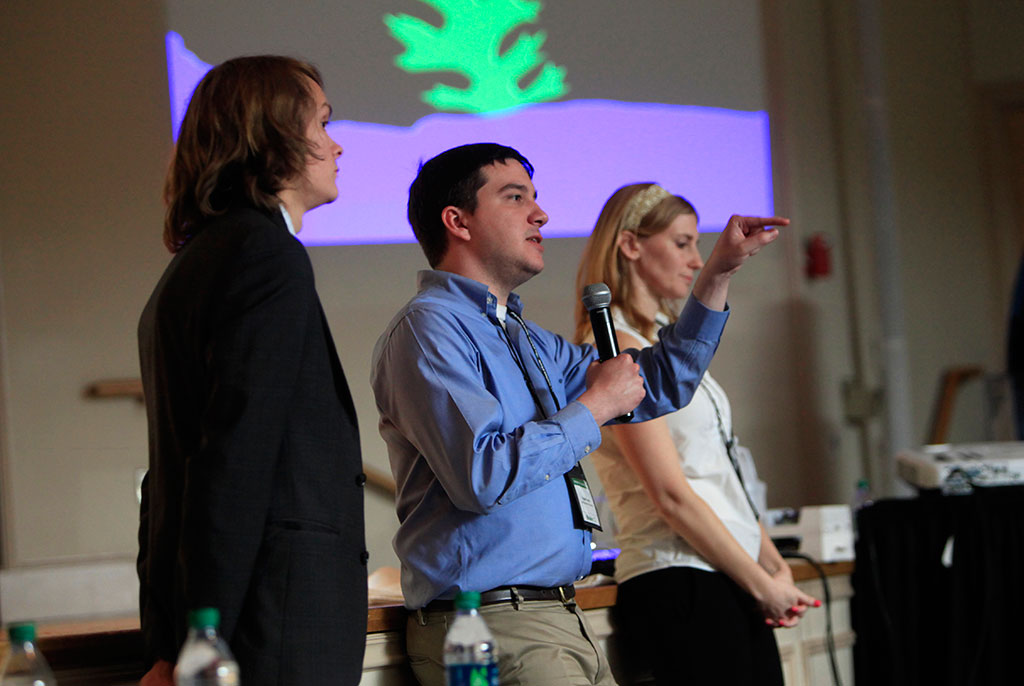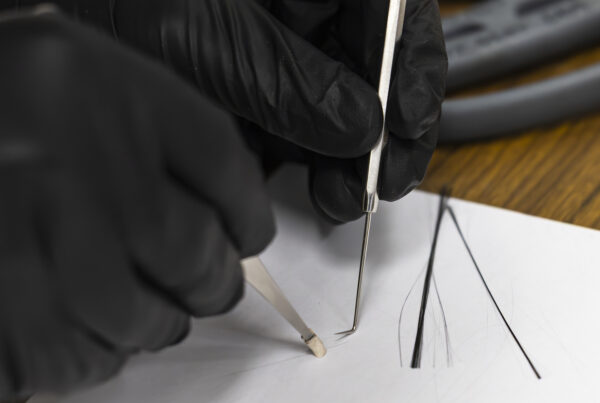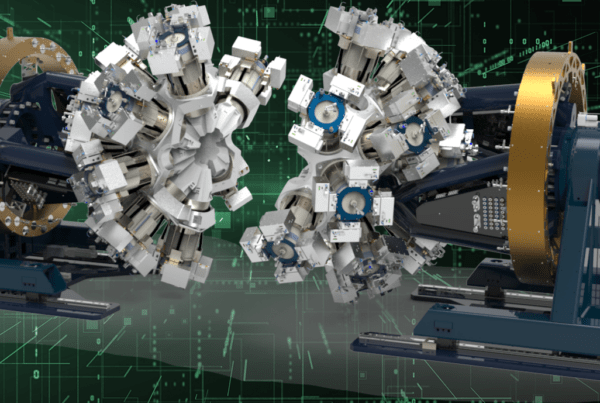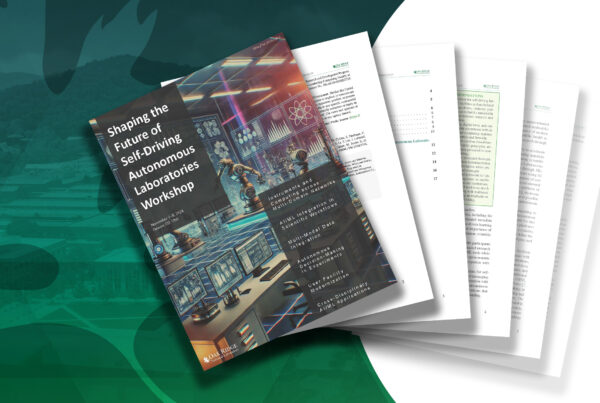
OLCF’s Robert French (center) discusses Tiny Titan with Science Bowl participants with Lauzon (right) and OLCF’s Adam Simpson (left).
OLCF staff members participate in youth outreach at annual event
Tiny Titan was featured prominently this spring at the US Department of Energy (DOE) National Science Bowl at the National 4-H Conference Center in Chevy Chase, Maryland.
The event, which took place April 30–May 4, is a nationwide academic competition featuring math and science topics.
Organizers from the DOE National Science Bowl initially approached Carolyn Lauzon, Advanced Scientific Computing Research (ASCR) Leadership Computing Challenge Program Manager in DOE’s Office of Science, to add Tiny Titan to this year’s agenda. Tiny Titan’s presence was to be a part of the event’s ongoing outreach to students, said Adam Simpson, a user assistance specialist at the Oak Ridge Leadership Computing Facility (OLCF), a DOE Office of Science User Facility located at Oak Ridge National Laboratory. Simpson and Robert French, also of OLCF, took part in the event with Lauzon.
“Adam, Robert, and I were all a team. The Office of Science asked me to present Tiny Titan, but I’m not a computer scientist, nor do I have experience with supercomputers. I knew for an event with such smart kids like the Science Bowl, Adam and Robert had to be involved,” Lauzon said. “It was great teaming up with them. They fielded the technical questions, shared their experiences of working at a national lab, and developed great new demos for Tiny Titan.”
The Science Bowl agenda included three Tiny Titan demonstrations—one for middle school-aged children and two for high school students. Each lasted one hour and 15 minutes.
“The goal was to get the kids excited about supercomputing,” Lauzon said. “We used Tiny Titan to tell the story of supercomputing and to highlight why we need the next generation of bright minds to be working on supercomputing.”
French noted that participants showed a strong interest in Tiny Titan, and many asked insightful questions.
Simpson added, “The demonstrations were well-received, and they sparked conversations on how cool supercomputing is. Many of the students said they wanted to grow up to be computational scientists at ORNL, so I would say we had some pretty good success.”
One of the demonstrations showed the need for a high-speed interconnect by displaying how a Tiny Titan system would slow down if it were operating simply using a Wi-Fi signal. Another exercise showed how the unit would behave if it were “overclocked” (resetting some computer components so that it runs faster than the manufacturer’s specified speed).
Simpson and French agreed that the demonstrations prompted an energetic exchange with many of the students.
“These are the smartest kids I’ve ever seen in my life,” Simpson said. “Some of them are barely in high school, and they asked questions like adults. It was very cool. I was just so impressed by them.”
Tiny Titan also was featured during teacher workshops at the event, offering teachers the opportunity to explore ways to incorporate a Tiny Titan system at their schools and to learn more about how the miniature supercomputer works.
DOE created the National Science Bowl in 1991 to encourage students to excel in mathematics and science and to pursue careers in these fields. More than 250,000 students have participated in the National Science Bowl—one of the nation’s largest science competitions—throughout its 25-year history. The Office of Science manages the National Science Bowl and sponsors the finals competition.
Lauzon hopes to build off the Science Bowl experience for future outreach opportunities.
“With ASCR support, I’m going to recreate the demos here on the Office of Science Headquarters’ Tiny Titan to bring to other local events in the Washington, DC, area,” she added.
Oak Ridge National Laboratory is supported by the US Department of Energy’s Office of Science. The single largest supporter of basic research in the physical sciences in the United States, the Office of Science is working to address some of the most pressing challenges of our time. For more information, please visit science.energy.gov.





